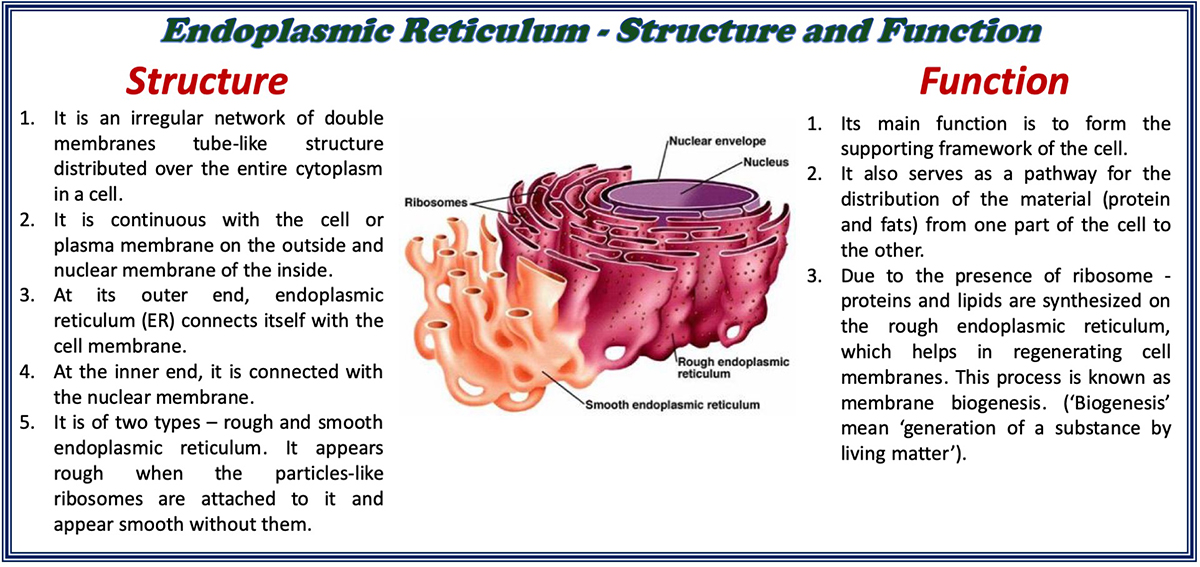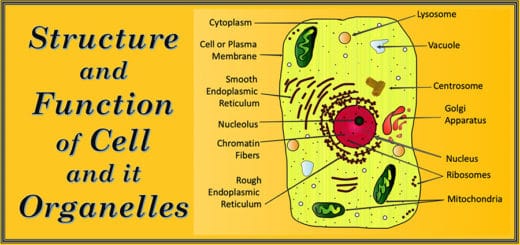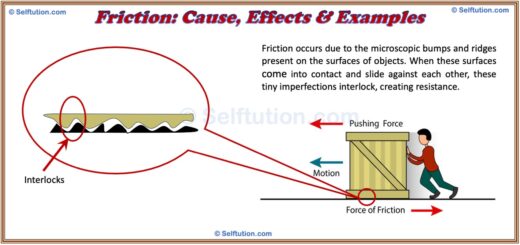Structure and Function of Endoplasmic Reticulum
The endoplasmic reticulum is an important part of a cell that makes and transports proteins and fats. It comes in two types: smooth endoplasmic reticulum and rough endoplasmic reticulum. This blog will explain the structure and function of the endoplasmic reticulum and why it is essential for cell survival and growth.
Endoplasmic Reticulum
The endoplasmic reticulum (ER) is one of the cell organelles. Organelle means ‘the little organs’. Organelles have a definite structure and defined functions in the cell and have the same status in the cell as the organs have in the body of an animal or a plant.
The endoplasmic reticulum is an irregular network of double membrane tube-like structures, whose primary function is to provide a supporting framework to the cell. It is of two types – rough and smooth endoplasmic reticulum. In this post, we will learn about the structure and functions of both – the rough and the smooth endoplasmic reticulum.

Endoplasmic Reticulum
STRUCTURE AND FUNCTION OF ENDOPLASMIC RETICULUM
We use an electron microscope to reveal the existence of the endoplasmic reticulum (ER) within the cell due to its fine structure.
Structure of Endoplasmic Reticulum
- It is an irregular network of double membrane tube-like structures distributed over the entire cytoplasm in a cell.
- It is continuous with the cell or plasma membrane on the outside and the nuclear membrane on the inside.
- At its outer end, the endoplasmic reticulum (ER) is connected with the cell membrane.
- At the inner end, it is connected with the nuclear membrane.
- It is continuous with the cell or plasma membrane on the outside and the nuclear membrane on the inside
- The endoplasmic reticulum is of two types – rough and smooth. It appears uneven when the particles-like ribosomes are attached to it and appear smooth without them.
Common Functions of Smooth and Rough Endoplasmic Reticulum
- Its primary function is to form the supporting framework of the cell.
- It also serves as a pathway for the distribution of the material (protein and fats) from one part of the cell to the other.
Specific Function of rough endoplasmic reticulum
- Due to the presence of ribosomes, the rough endoplasmic reticulum synthesizes proteins and lipids, helping regenerate cell membranes. We call this process membrane biogenesis (‘Biogenesis’ means ‘generation of a substance by living matter’).
Structure and function of endoplasmic reticulum in tabular form

Structure and function of the endoplasmic reticulum (ER)
RIBOSOMES AND ITS FUNCTION
Ribosomes are numerous small granules that either float freely in the cytoplasm or attach to the membranes of the endoplasmic reticulum, giving it a rough appearance. These tiny, single-walled, dense, spherical structures primarily consist of RNA (Ribonucleic Acid) and proteins.
Ribosomes actively synthesize proteins, which are essential for cell growth and function. They assemble amino acids into proteins based on genetic instructions. Because of this vital function, cells refer to ribosomes as the “factories” or “sites” of protein synthesis. Without ribosomes, cells cannot produce the proteins needed for various life processes, such as repairing tissues, maintaining cell structure, and enabling enzyme activity.
The video from Bodhaguru explains the structure and function of the endoplasmic reticulum using a 3D model.























